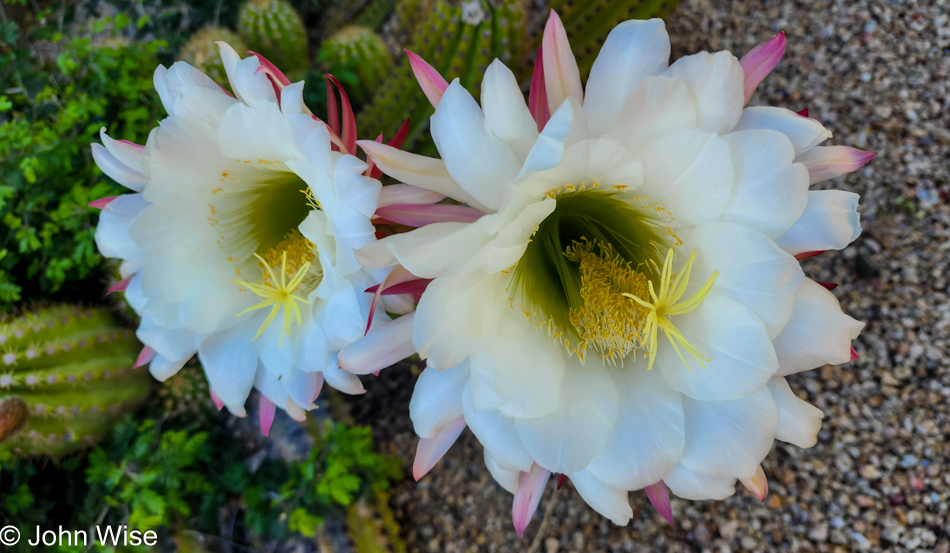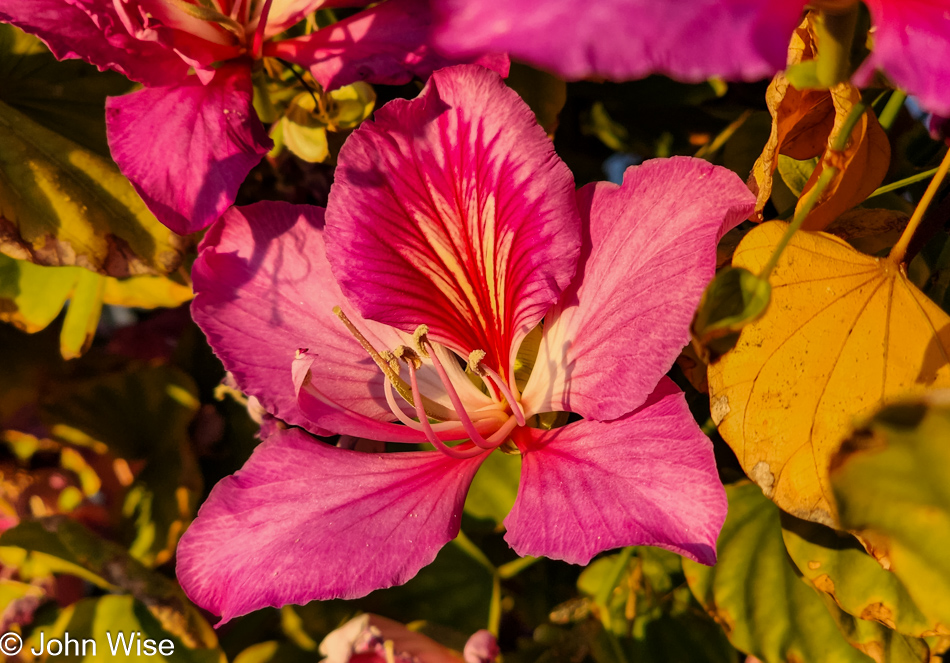
This post has nothing to do with marijuana. The title was a convenient reference to a particular date to post something. Cactus blooms are small (though sometimes rather large) treasures that are real rarities. Sadly, as quickly as they show up, they are just as soon gone. Artificial Intelligence to the rescue! Posing the question as to why their blooms are so short-lived, Claude informed me of what should have been obvious. Blossoming flowers require a lot of energy and water. These things can be scarce in the desert, and with such a burst of contrasting beauty, they quickly attract the pollinators they require and, with their purpose satisfied, move immediately to wilting and death.
Another thing, most of these cactus blooms are in full flower when we are out at the break of dawn. It’s cooler then, so less evaporation will take place; plus, their primary pollinators being bats, moths, and beetles, those nocturnal creatures have these treats to themselves until the bees awaken.

Not being experts in the visual identification of precisely what variant of hibiscus was blooming on this tree, we felt it better to admire the blossoms and not risk having a taste. Being in the Southwest, with a large Hispanic population, we have a ready supply of dried hibiscus flowers at any number of grocery stores that cater to the Hispanic market.
Attention: The above paragraph is false. It turns out that AI image detection is not foolproof, whereas I, the editor, am extraordinarily brilliant and nearly perfect. Compare my knowledge to that of this man who claims to be a capable writer who engaged in the following text exchange, “Seriously, John? Everyone can see that this is Hoa Ban Tím, commonly known as Hong Kong Orchid.” To which he feebly replied, “Oh really, so why’s it in Arizona smarty pants?” I had to point out the obvious, “Duh, I’m from Germany, right?” What he wrote next makes me want to cry, “You’re telling me that someone married a plant?”